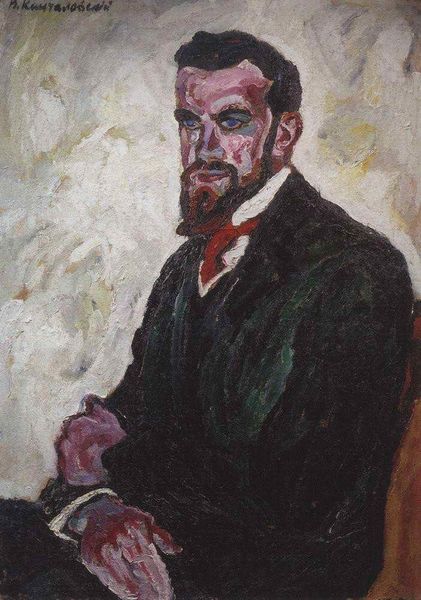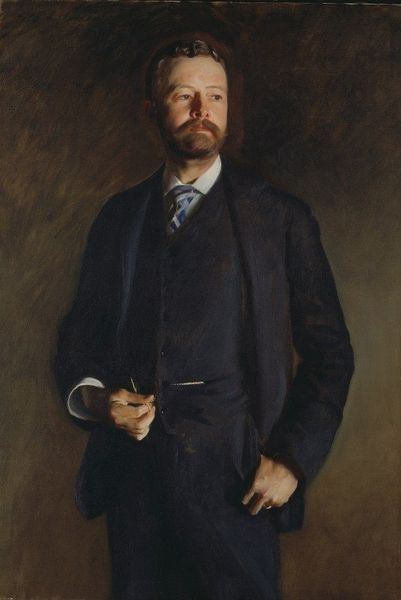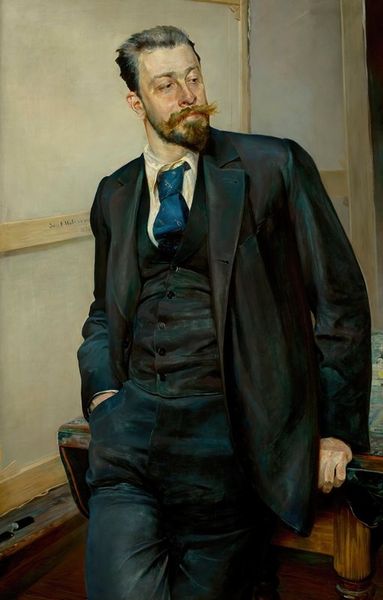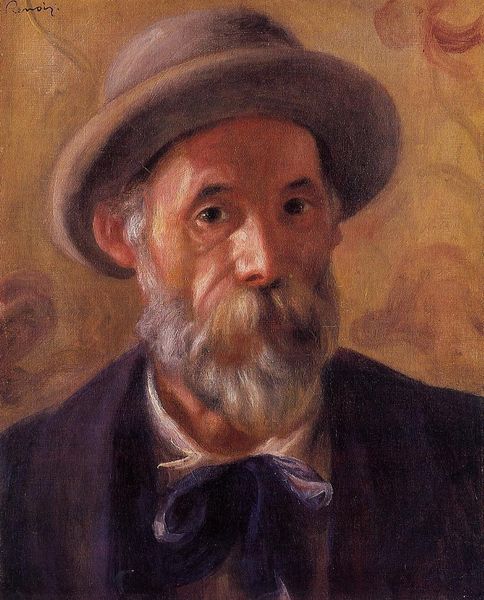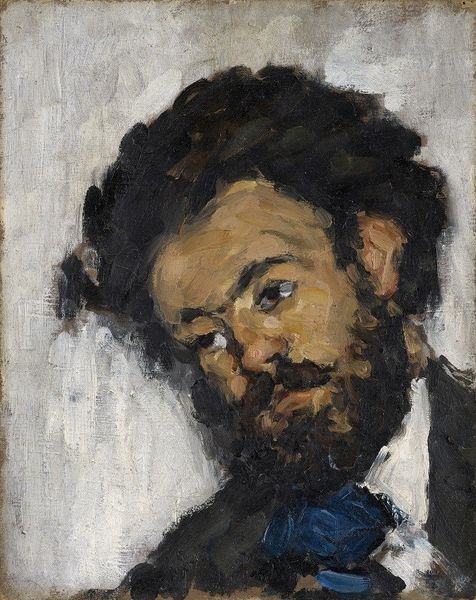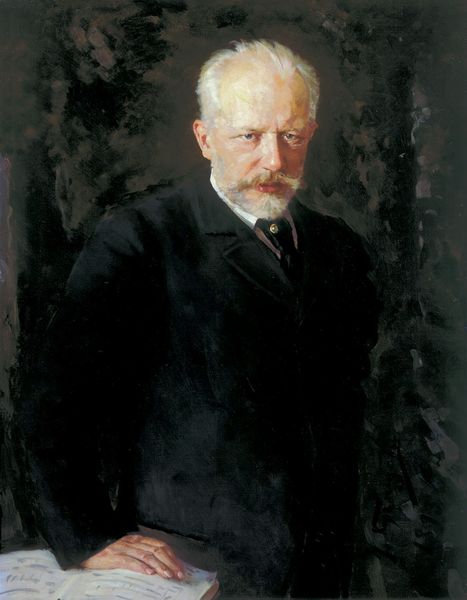
Copyright: Public domain
Editor: Here we have Ilya Repin's oil on canvas, "Portrait of the Cello Player Alexander Verzhbilovich" from 1895. The portrait possesses such a poised, dignified stillness about it. What stands out to you about this piece? Curator: This portrait offers insight into the evolving status of musicians within late 19th-century Russian society and its shifting socio-political landscape. Prior to this period, musicians, particularly those of lower social standing, were often relegated to the margins of representation. Repin's decision to portray Verzhbilovich, a renowned cellist, signals a growing recognition of artistic merit and cultural contributions outside of the aristocracy. Editor: So you see this portrait as a statement about the changing societal views on artists? Curator: Precisely. Notice how Repin renders Verzhbilovich not simply as a performer, but as a man of intellect and presence. His composed demeanor and piercing gaze exude a quiet confidence, a far cry from earlier depictions that often emphasized the subservience or eccentricity of artists. How do you think this image might have been received by the Russian art world at the time? Editor: I would imagine it challenged existing norms by presenting a musician as an individual worthy of respect and admiration. I am now wondering about how the Russian avant-garde movement changed people's outlook in art during this era. Curator: It's interesting how the rising social status of intellectuals during that period gave the avant-garde movement opportunities to question the Russian art establishment. Verzhbilovich, by sitting for this portrait, also asserted his role in this social shift. Editor: This has totally reframed my perspective on this artwork. Now, when I look at it, I'm seeing beyond the subject to the socio-political messages it conveys. Curator: Indeed, viewing art through this lens enriches our understanding and encourages us to think more critically about the power of visual representation.
Comments
No comments
Be the first to comment and join the conversation on the ultimate creative platform.

